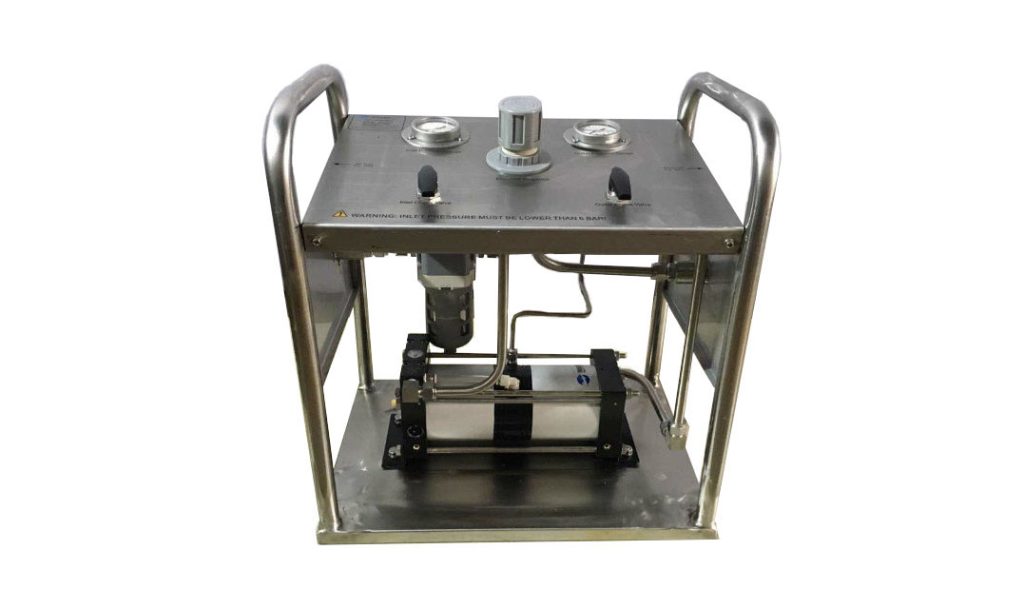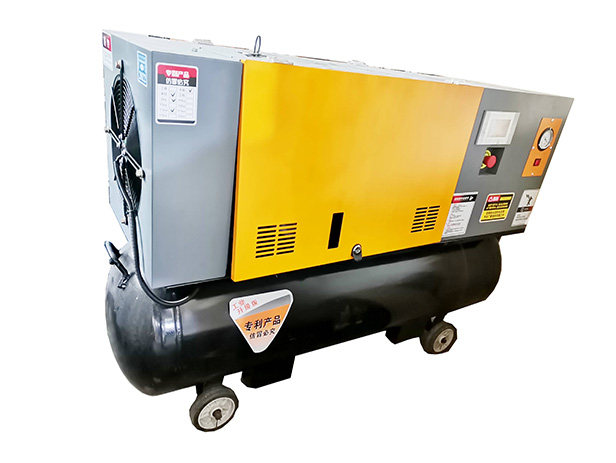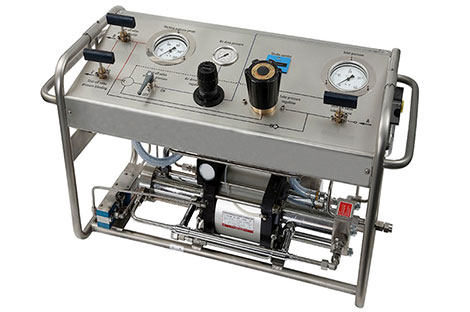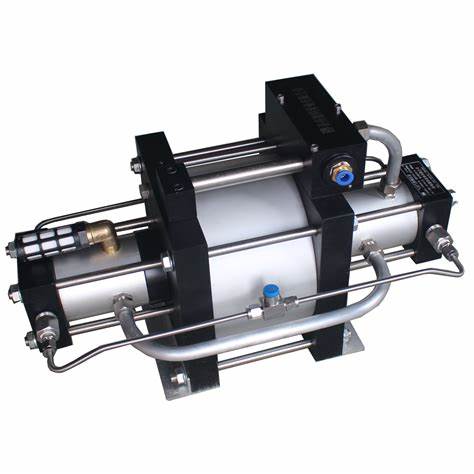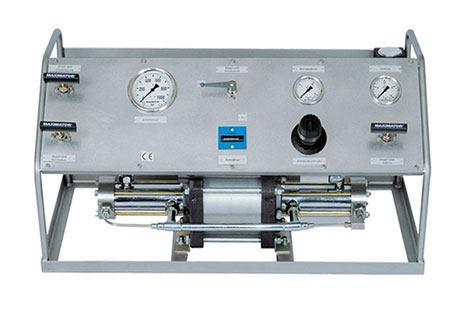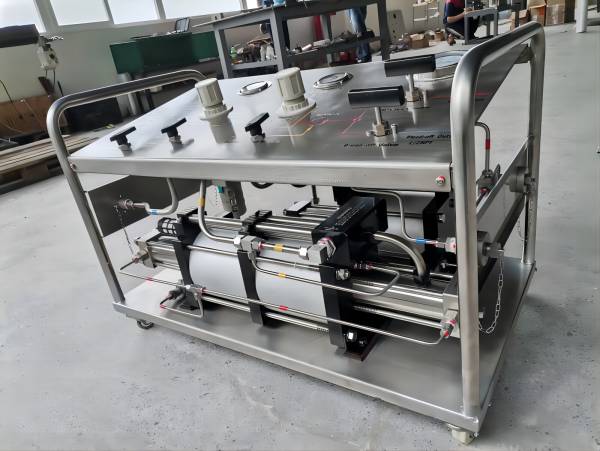Understanding the Working Principles and Applications of Nitrogen Booster Pumps
Nitrogen booster pumps, also known as nitrogen boosters, play a crucial role in a variety of industrial applications, especially when it comes to pressurizing systems and equipment. Whether it’s filling accumulators or increasing nitrogen gas pressure, nitrogen booster pumps are indispensable tools. To make informed decisions regarding their selection and application, it’s essential to comprehend the working principles that underlie these devices. In this article, we will explore the working principles of nitrogen booster pumps and their versatile applications.
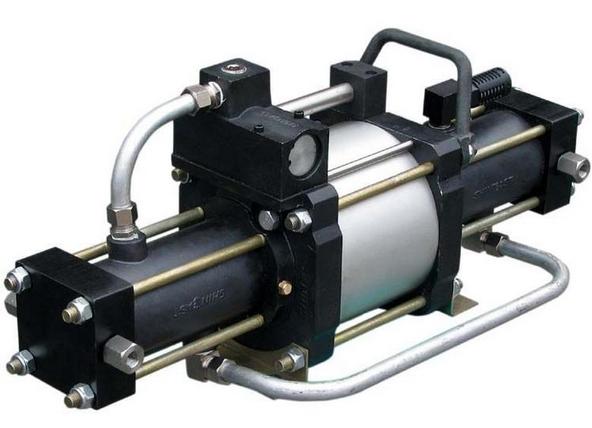
A Brief Introduction to Nitrogen Booster Pump
Before delving into the intricate details of how nitrogen booster pumps operate, let’s start with the basics. A nitrogen booster pump is classified as a secondary booster pump, designed to elevate the pressure of regular low-pressure nitrogen gas to the desired level, which can reach as high as 40 MPa (megapascals). These pumps find application in various tasks, including charging accumulators and pressurizing nitrogen for specific purposes.
At the core of a nitrogen booster pump is the gas-driven piston or diaphragm mechanism. This mechanism is responsible for converting low-pressure gas into high-pressure gas and subsequently delivering this high-pressure gas to either liquid or gas mediums, effectively increasing their pressure. These pumps are typically used in industrial settings where high-pressure gases or liquids are required, such as for seal testing, pressure testing, and fixture clamping.
Working Principle of Nitrogen Booster Pump
The working principle of a nitrogen booster pump shares similarities with that of air-driven pumps. Essentially, nitrogen booster pumps operate by leveraging the principles of levers and air pressure amplification to achieve their intended results.
To understand this principle better, let’s break it down into key components and their functions:
- Gas-Driven Head: Nitrogen booster pumps are driven by compressed air, which converts the potential energy of the gas into mechanical energy.
- Compression Components: Within the pump body, you’ll find components like pistons, connecting rods, liquid pistons, and springs. These elements work in concert to compress the low-pressure liquid from the low-pressure cylinder.
- Pressure Amplification: As the piston moves, it acts on the liquid piston, drawing liquid from the low-pressure cylinder. When the piston moves upward, it pushes the liquid piston down, thereby increasing the pressure of the liquid, which is then transferred to the high-pressure cylinder.
The critical concept at play here is gas pressure amplification. Due to the compressibility of gases, when pressure is applied to a gas on the piston, the connecting rod and liquid piston work together to amplify this pressure within the liquid. This amplification allows for precise control of liquid pressure, making it an efficient way to increase pressure in a controlled manner.
In practical terms, when the pump is in operation, compressed air enters the gas-driven head, where it is converted into mechanical energy. This energy is then transferred to the compression components within the pump body, which compress the liquid within the low-pressure cylinder. Once the pressure within the liquid reaches the desired level, the supply of compressed air to the gas-driven head is halted. Consequently, the liquid pressure remains stable. However, if the pressure in the liquid drops for any reason, the supply of compressed air is resumed, causing the liquid to be re-compressed and pressure to be raised once more.
Applications of Nitrogen Booster Pumps
Nitrogen booster pumps are incredibly versatile and find application in numerous industrial scenarios where a high-pressure liquid supply is essential. Here are some common applications:
- Hydraulic Testing: Nitrogen booster pumps are frequently employed in hydraulic testing applications, where they are used to pressurize hydraulic systems for testing and validation purposes. This ensures the reliability and safety of hydraulic equipment.
- Sealing Tests: In industries where tight seals are critical, such as in automotive manufacturing, nitrogen booster pumps play a vital role in conducting sealing tests. These tests help ensure that products are leak-proof and meet quality standards.
- Industrial Cleaning: High-pressure liquids are often used in industrial cleaning processes to remove dirt, debris, and contaminants from machinery and equipment. Nitrogen booster pumps provide the necessary pressure to facilitate efficient cleaning operations.
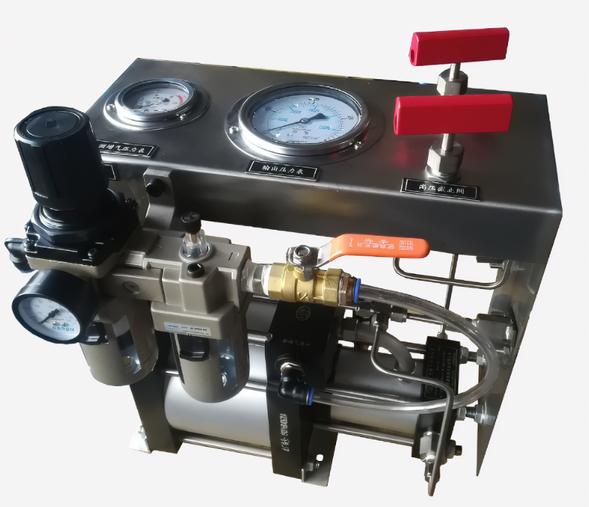
Conclusion
In conclusion, nitrogen booster pumps are indispensable tools in various industrial applications where high-pressure gases or liquids are required. Their working principle, based on gas pressure amplification and precise control of liquid pressure, makes them valuable assets for tasks ranging from hydraulic testing to sealing tests and industrial cleaning.
Understanding how nitrogen booster pumps operate is essential for selecting the right equipment for specific applications and ensuring their effective use. As technology continues to advance, these pumps will likely play an increasingly crucial role in industries that rely on high-pressure systems and equipment.

